You may have read my article on the big summer vocational sailing trip with my family recently. In this you also might have seen the pictures of the big algae carpets on the seas. It was a fascinating but also frightening sight, frustrating as well. Since this is a real pest for the Baltic Sea and it is getting worse by the year, I thought it might be interesting to do some research on this topic. And as I understand it, it´s a multi-national problem of political failure, pure negligence and ignorance.
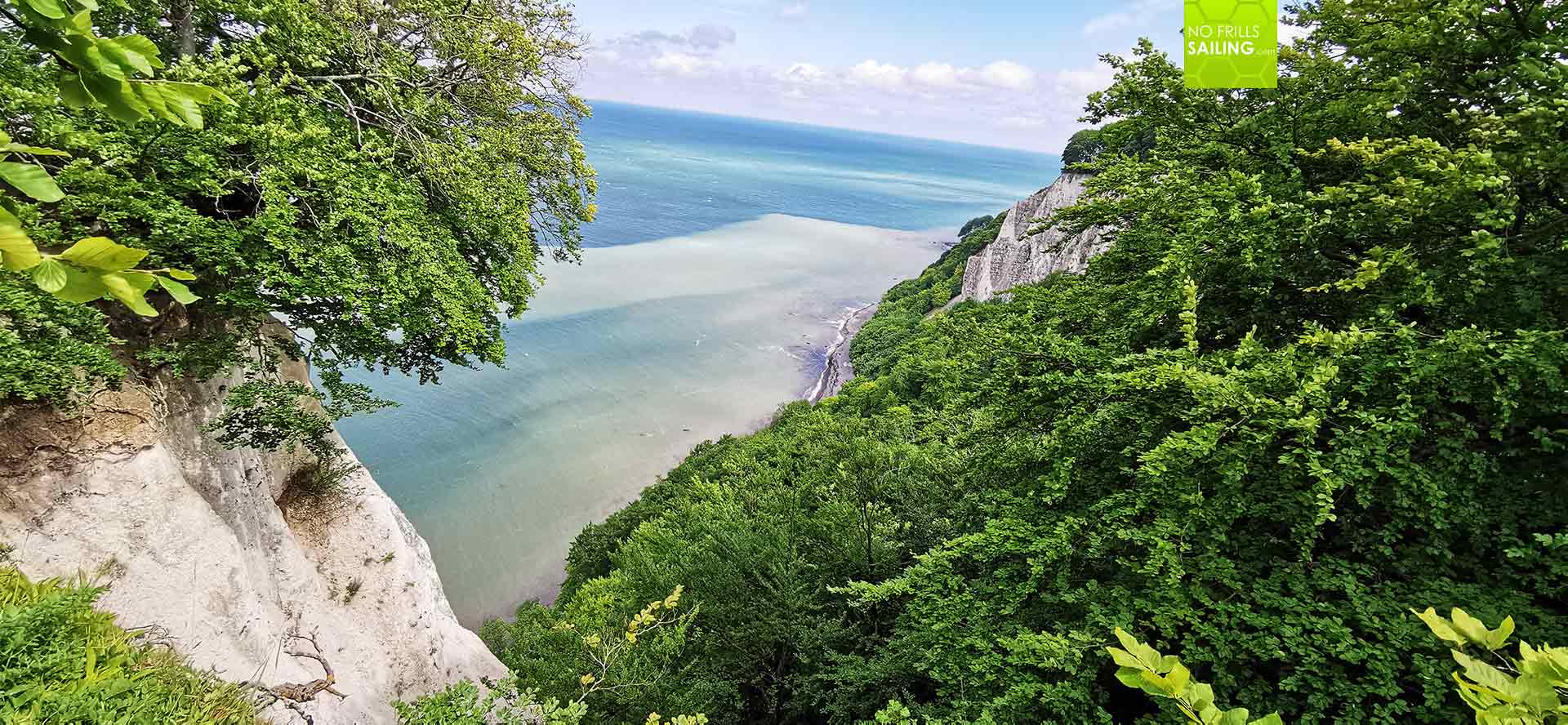
It all began on the first day of our holiday: Outside was too much wind so I decided to postpone our casting off for one day. We used the time on the beautiful German island of Ruegen to drive around with our car and visit the most beautiful spots. Just as the so-called Kaiserstuhl. This is one of the biggest cliffs made up out of pure white chalk. A spectacular sight and big fun for the kids being up there above the ground looking down onto the sea. But what we saw was a huge yellowish carpet of algae: Menacing the beaches of Ruegen, sluggishly sloshing and lingering all around the island.
Vacation with a setback
We set off the next day and right after the first couple of miles the GEKKO sailed through the thick carpet made of algae. The carpet changed its form and appearance, depending on the swell and intensity of the wind. There were round forms, thready filaments, closet carpets and thick lines. Fascinating, at times beautiful.
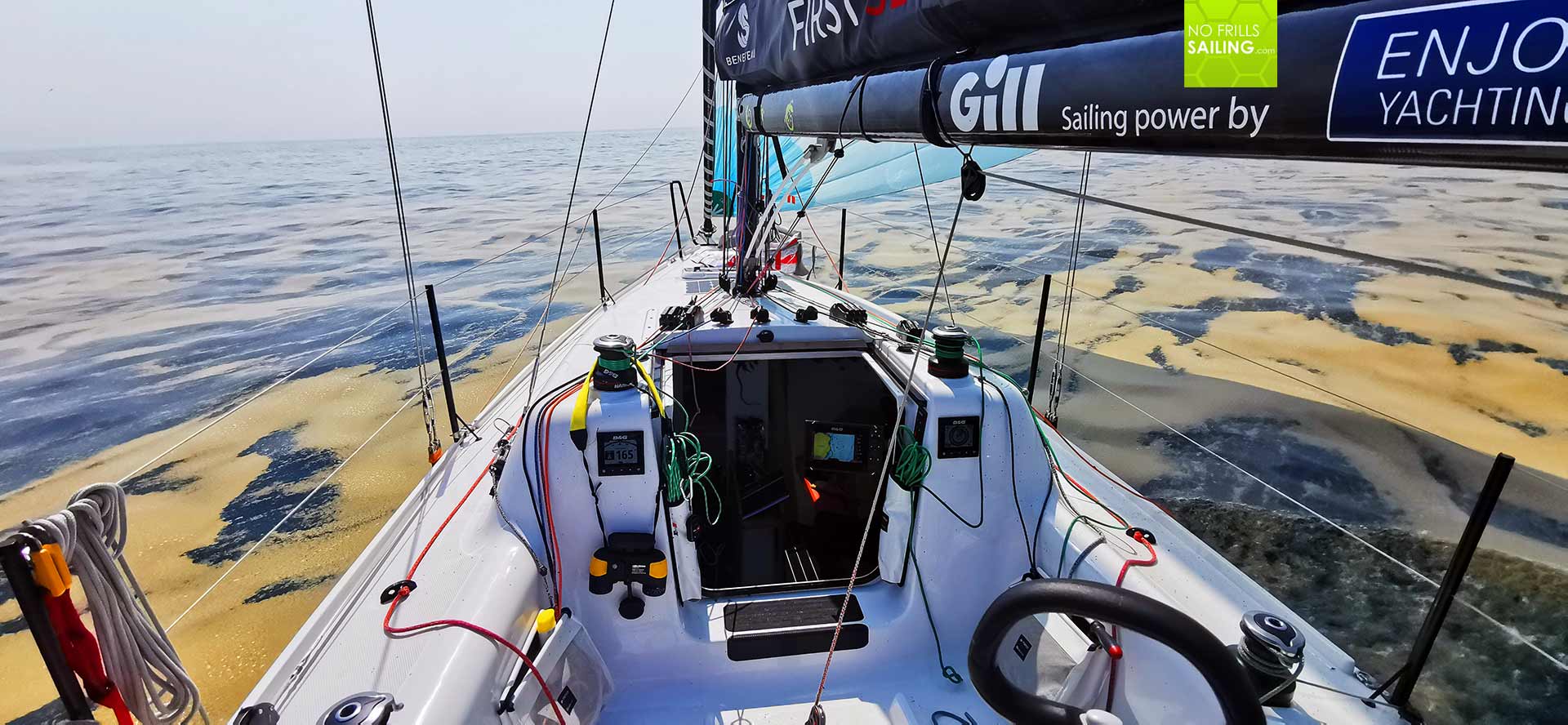
The algae carpets covered huge areas, sometimes we sailed on for hours through these. In the local newspapers the specialists argued about which type of algae were apparent. Some said they were harmless brown algae, some others (the majority) said they were blue algae, or Cyanobacteria. Which is a bit worse. Well, facing these huge amounts of biomass, where the hell do these algae come from? To understand that, one must see that algae need two things: Warm temperatures and a relatively smooth surrounding to grow into (which is given in the warm Baltic Sea where the last weeks seldom strong winds and hard swell has sturred up the seas) and “food”. Regarding the food for these, that´s the real scandal.

Most probably the algae blossom is boosted by nitrogen. Nitrogen fertilization is a must nowadays for farmers to keep up the fertility of their ever-deteriorating grounds. In Germany alone the annual usage of nitrogen fertilizers is in fact declining, from nearly 18.000 tons in 2015 to 13.000 tons 2019, but one might imagine that the usage of this fertilizer in all neighboring states of the Baltic Sea is still on a record high. Since erosion is a big problem, farmers tend to use much more fertilizer to fill up the washout of the rain. This washout eventually ends up in a river which, always, flows into an Ocean. The Baltic Sea, naturally, is a very closed-up Sea with just a tiny connection to the North Sea. Exchange and replacement rate of water is very low. So, it adds up, powered by the sun, boosted by the warming event of our Earth.
Algae bloom: What is it?
Pure negligence of this problem within the EU-states follows. As the algae carpets are annoying and not very pleasant but are not posing an imminent problem, most states just ignore it. I have the feeling that they just hope for the winter-time and that the next wind shift may blow over these carpets to the neighbors. Sweden, at least, offers an information portal where one can see which areas are most affected. Which is an important thing: Cyanobacteria is not a pet, indeed.
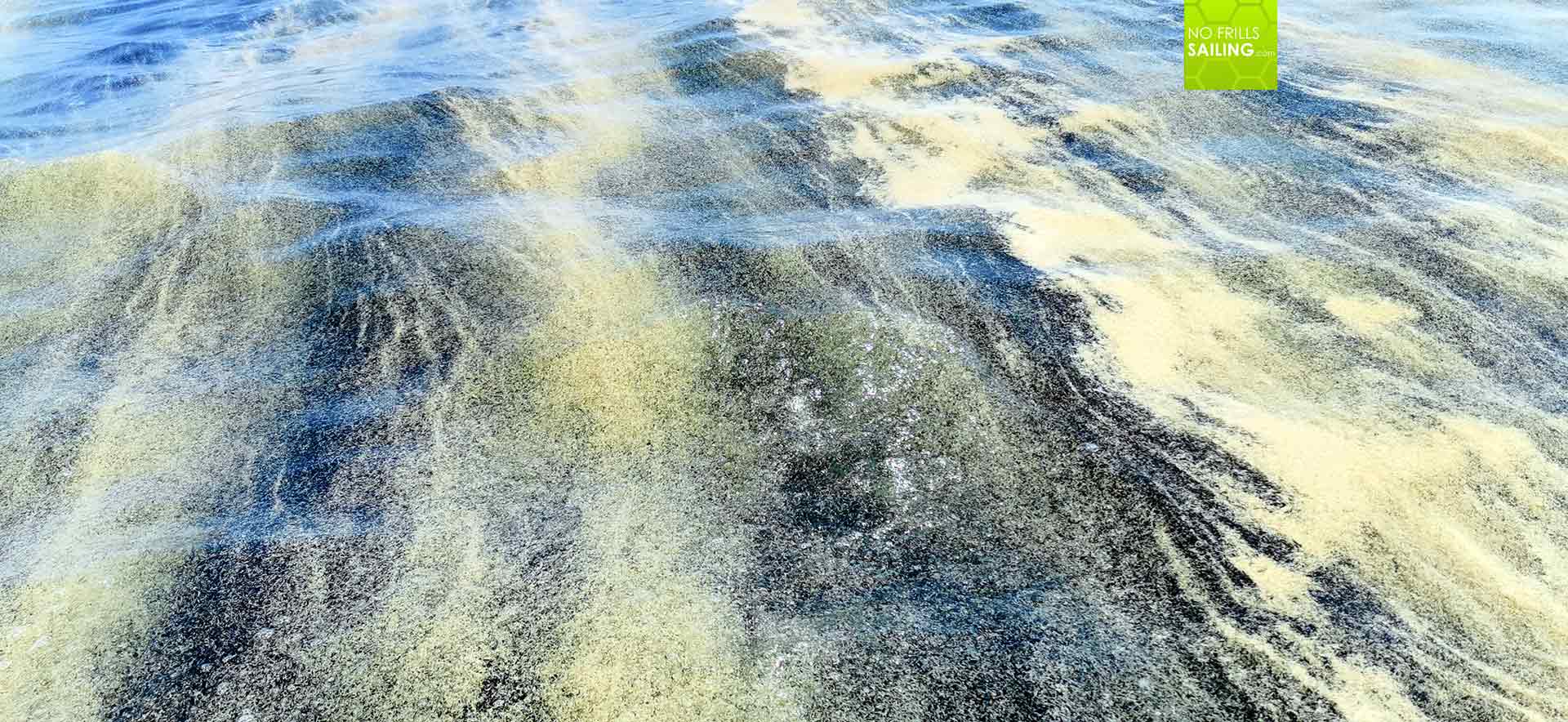
Mostly, when cyanobacteria-carpets nearing the beaches, a bathing ban is issued. Especially young kids, who tend to swallow water or lick their fingers (and anything else) are prone to the serious effects of cyanobacteria: Products of their metabolism include allelochemicals, antibiotically active chemicals, hormones and other toxins. When swallowed, these can have very serious effect, ranging from rashes and other skin irritations to hardcore enteric infections. In this, it is a matter of course that parents protect their kids: No bathing, no swimming. So imagine my pity having to tell my boys that they could not swim at all during the whole holiday? All the way from Germany over to the Danish island of Bornholm the sea was filled with blue algae.
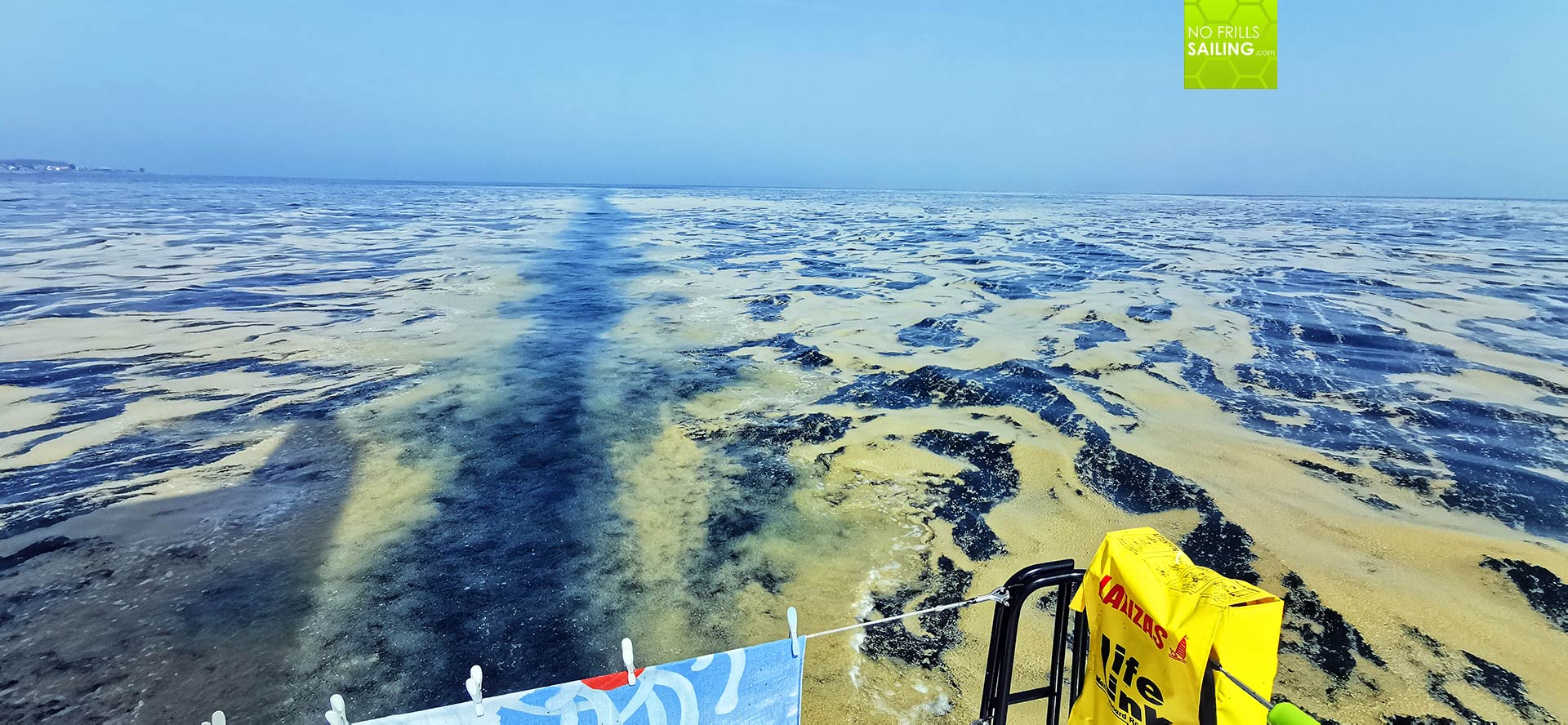
I even couldn’t wash the boat using a bailer, I could not refresh in the sea. The whole idea of a vacation at the sea was toppled: Instead of a lush, fun bathing time we just looked in disgust and disapproval onto a green, yellowish sea, appearing like an ocean of acid. It is a real pity!
What can be done?
Well, I am not an expert for farming or EU-politics, nor I am a biologist or oeanographer. But it is apparent that the trend for overproduction and hence overfertilization is a real big problem. In the past farmers used to fertilize their soil with nutrient-rich, cheap and abundant liquid manure. This is strictly forbidden since decades and not an option anymore. Why? Because of the antibiotics and other extras put into the cattle´s food, which are now polluting the slurry, rendering it “toxic waste”. The only way to fertilize is artificial – creating another problem: Worldwide nitrogen deposits are diminishing, rising prices follow suit. It´s a vicious circle indeed.
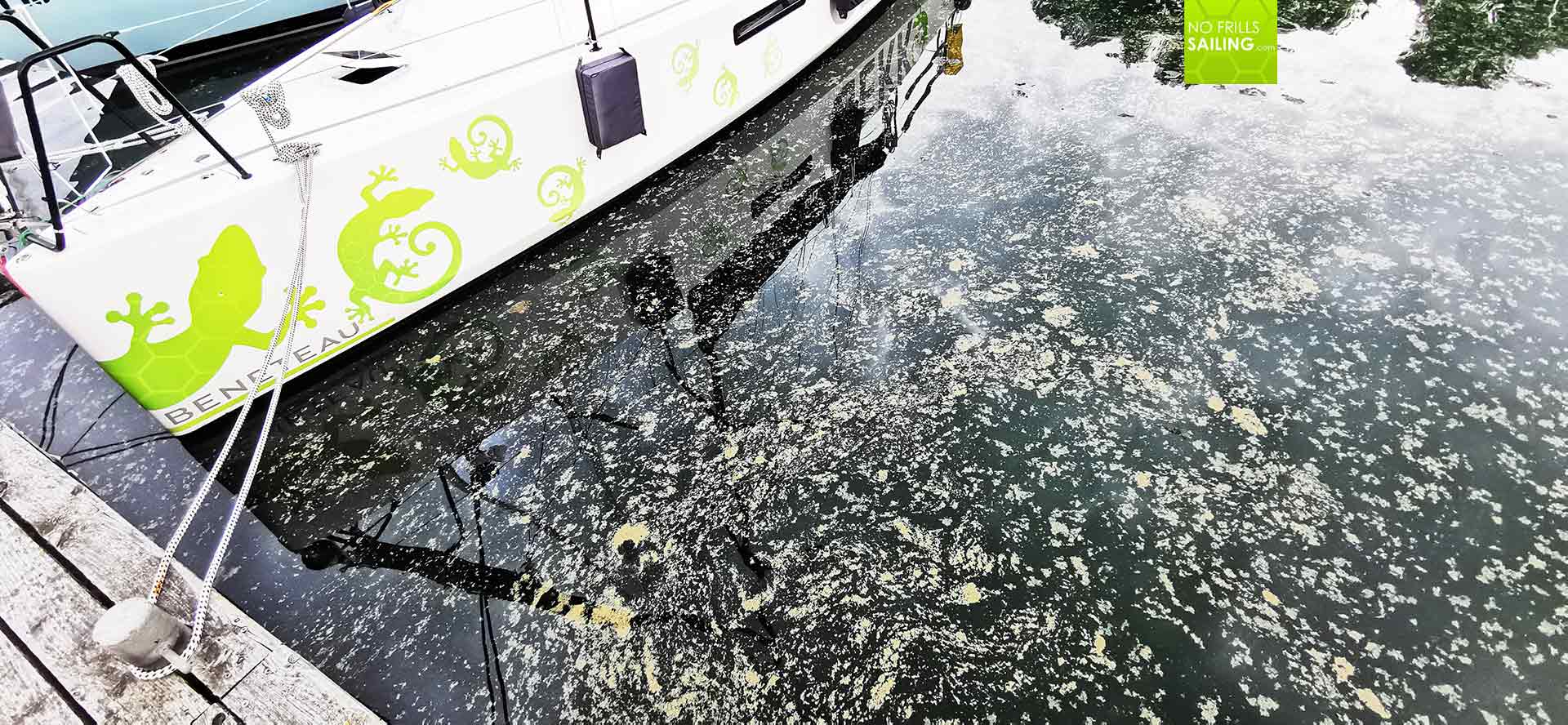
Apart from the global impact and multinational connections, the implications right here for us are apparent: Sad faces of my kids, disgusted looks when hourlong sailing through the green plague. Is this how the new summer-time will look like in the Baltic Sea? I don´t think that they will change anything politically: Most of our population simply do not see this problem nor do they get limited by it, it´s just an annoyance, a side note. But the effects on marine life in the already hard battered Baltic Sea may get worse. It is a pity realizing and really seeing how we destroy our precious world.
You may also like to read:
One week vegan food whilst sailing – an experiment
Solar power for sailboats
Sustainable boatbuilding, is it possible?
